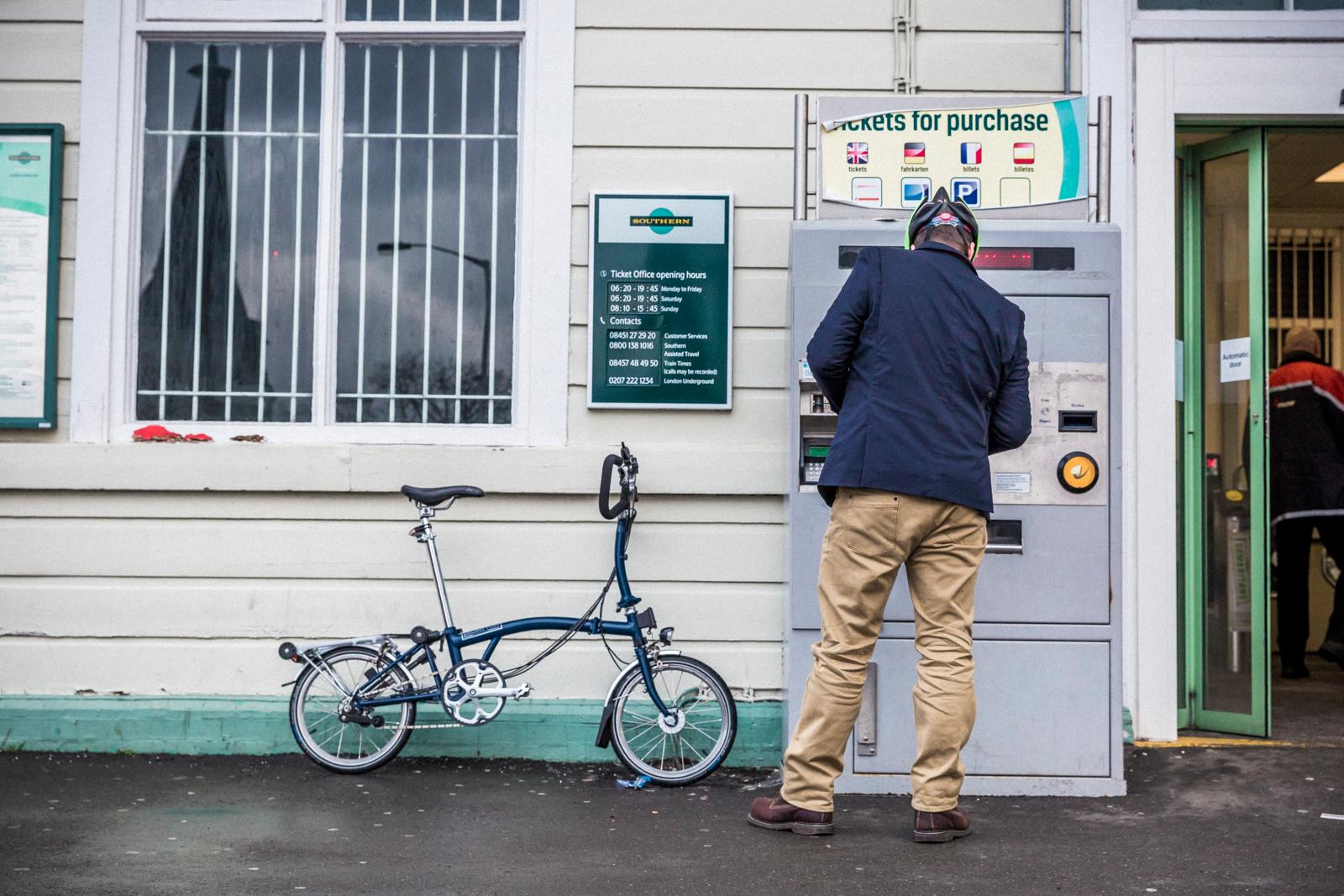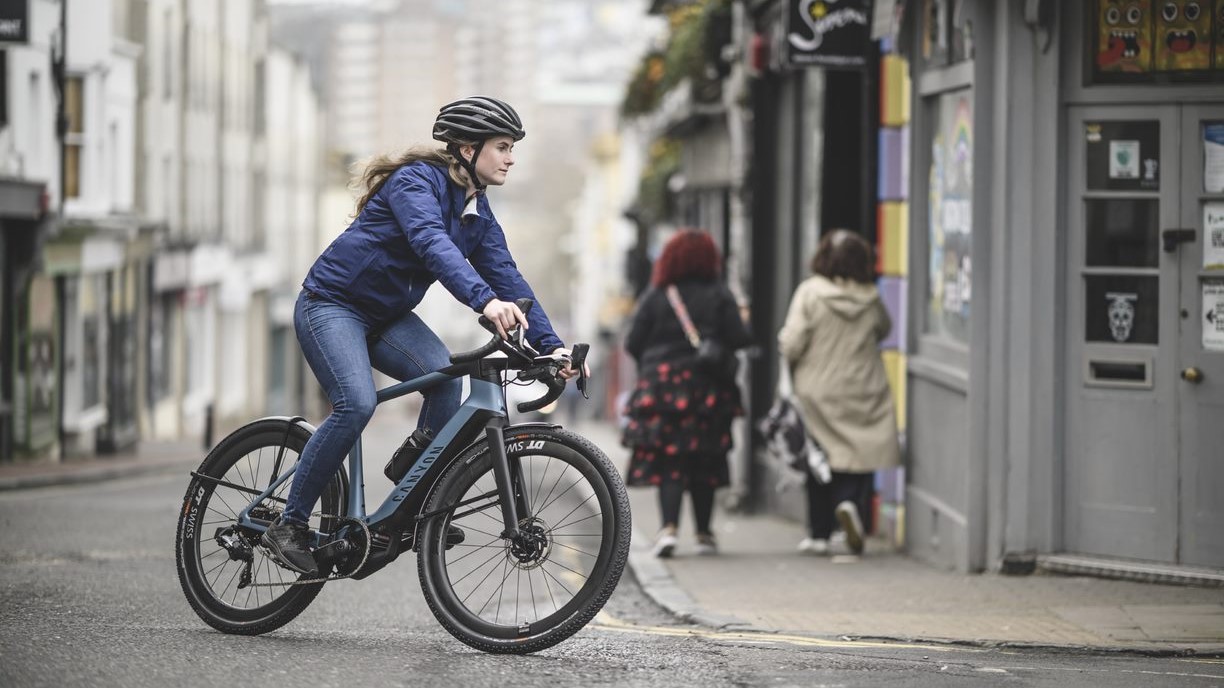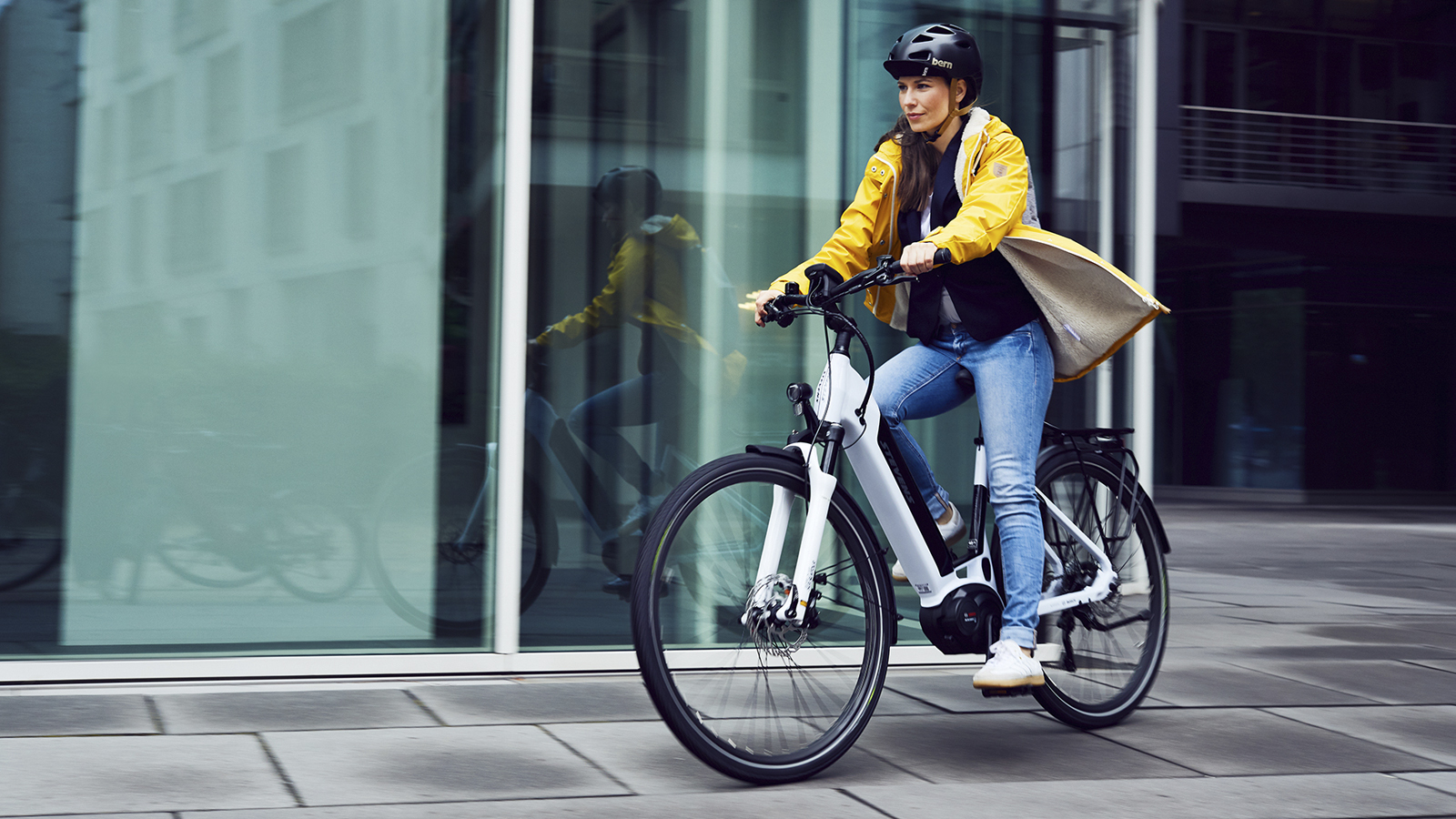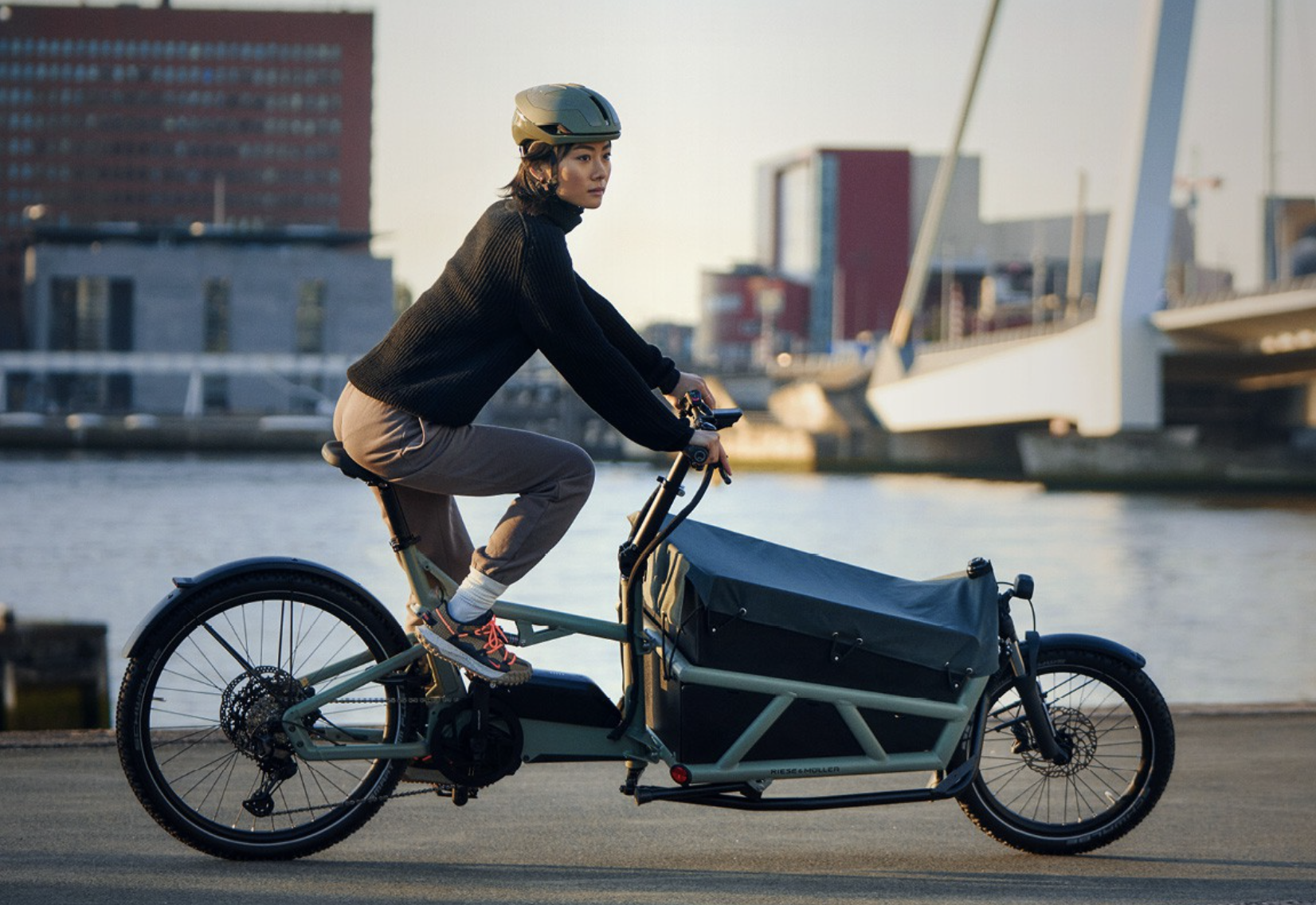Cycle to work scheme: Everything you need to know
We've compiled everything you need to know about the cycle-to-work scheme.

Summer is just around the corner, and perhaps you’re dreaming of balmy mornings spent on a brand-new bike, speeding down quiet country roads under big blue skies on one of the best road bikes. Or maybe you are considering adding just another bike, perhaps something better suited to weekends spent on the mountain trails, to your steadily growing collection.
Either way – enter the cycle-to-work scheme as an ideal way to finance your new bike dreams!
You’ve likely heard of the scheme before; having been around since 1999 and helping over a million UK workers, the cycle-to-work scheme is a UK government initiative designed to get people moving and reduce carbon emissions associated with travelling. It's also worth noting from the off that there are a few different schemes out there that, at times, are generally referred to collectively as 'cycle to work' schemes. This article talks primarily about the cycle-to-work scheme itself just to be clear.
It allows you to purchase a bike (including cargo bikes or electric bikes) and any accessories you might need to go with it through your employer, spreading the cost over monthly tax-free instalments. For basic-rate taxpayers, you’re able to save up to about 32% of the bike’s cost, and for higher-rate taxpayers even more, making it an extremely cost-effective option for anyone interested in doing a bit more cycling.
We’ve pulled together a comprehensive guide to getting started with the cycle-to-work scheme.
How does the cycle-to-work scheme work?
The cycle-to-work scheme works, very simply, by hiring a bike your employer has purchased and repaying them through monthly instalments over an agreed period. Once this period has elapsed, you’ll be given the option to pay off whatever is outstanding to fully ‘own’ the bike yourself. The cycle-to-work scheme is essentially a salary sacrifice; you are sacrificing a portion of your salary for the benefit of the bike.
The minimum term of the salary sacrifice is generally 12 months, with some schemes and employers offering 36 or 48-month options too. How long you can spread your monthly payments will largely depend on the scheme, your employer and your own working circumstances.
Get The Leadout Newsletter
The latest race content, interviews, features, reviews and expert buying guides, direct to your inbox!
The scheme is particularly cost-effective because the monthly instalments are taken from your gross salary, which means that your tax and national insurance will be calculated on your salary less the cost of the bike (and any accessories you’ve added). You are therefore reducing your taxable income, which ultimately means you’re taxed less across the hire period.

Is there an upper limit on the cycle to work scheme?
Got your eye on something in particular?
When the cycle-to-work scheme was initially introduced, there was an upper limit of £1,000 for any bike, plus one of the best road bike helmets, best bike locks or best bike lights (and other accessories). This has changed somewhat over the past two decades, and the upper limit has been removed. Instead, some employers have internal restrictions on how much you can spend, and what type of bikes and accessories qualify for the cycle-to-work scheme.
In the same vein that there is no upper limit on the cycle-to-work scheme, there is also no minimum spend either, meaning you are for the most part free to choose the best bike for you.
The only caveat is that you can’t buy action cameras – such as GoPros – on the cycle-to-work scheme. Other than that, though, anything you might need for cycling into work, including things like pedals, lights, pumps, bells, a new groupset, panniers, child safety seats, mirrors and clips, mudguards and luggage racks are up for grabs as part of the scheme. You don't even need to include a bike, you can get the accessories on their own.

How do I buy a bike on the cycle-to-work scheme?
Once you’ve decided on the bike you’d like to purchase, taken it for a test ride or two, and selected the accessories you’re after, you’ll get the bike shop to draw you up an itemised ‘package’. This should then be submitted to your employer or cycle scheme, which will then issue you with an e-certificate for the value quoted. You’ll then pop back over to the shop, voucher in hand, and redeem it against your bike and other bits. Easy! In only a matter of days, you can be on your way to a brand-spanking new bike.
What happens at the end of the cycle-to-work scheme?
Thinking carefully about what happens at the end of the cycle-to-work scheme is crucial for deciding whether it is for you – and for deciding how long you would like the repayment term to last if that’s an option for you.
Once the hire period has come to a close, you will most likely have three options:
1. Make the one-off payment to purchase the bike (and accessories) outright from your employer.
2. Return the bike (and accessories) to your employer and end your cycle commuting days.
3. Negotiate another hire period.
It’s really important that you understand exactly what your scheme and workplace allow at the end of the hire period. Not all schemes will permit refinancing, and as HMRC require a one-off payment to be made to transfer ownership, you will likely have to stump up at least a small portion of the bike’s ‘fair market value’ at some point (this avoids any kind of complicated benefit-in-kind tax liability).
How much that one-off payment will be is dependent on the overall cost of the bike and the length of the hire period. For instance, a bike purchased for £1,000 is likely to have a final payment of £70 after a 4-year hire period, but £250 after a 12-month period, according to Cyclescheme’s calculator. You’ll be given an indicative outline before purchasing though, so speak to your employer for specific details, and think carefully about whether that payment will be affordable for you.
There are some clever ways to reduce this cost though. Cyclescheme, for instance, will allow you to pay a small deposit to keep the bike for three years following the end of your hire period. After the three years have elapsed, you will own the bike outright at no additional cost. The benefit of this is that you’re able to move jobs or take out further cycle-to-work schemes during this period without any financial penalties.
If your scheme allows it, you’ll also need to consider how long you want the hire period to last. While a longer hire period term might seem attractive initially – with a smaller ownership fee payment at the end – bear in mind that until you pay that final one-off payment, your employer is the legal owner of the bike and though it is unlikely, they could request it back from you.
With this in mind, we would recommend taking a look at your workplace policies to understand what happens to bike ownership if you leave employment within the hiring period or to make sure there aren’t any nasty surprises if your circumstances change. Most cycle-to-work schemes permit early repayment, with the final cost of the bike calculated by its age and some basic HMRC benchmarks.
What happens if my cycle-to-work scheme bike is stolen or damaged?
You’ll need to consider the cost of insurance when deciding whether you want to purchase a bike through a cycle-to-work scheme. While it isn’t mandatory, it’s something we’d recommend you take out.
If your bike is stolen or written off during the hiring period, you will still be liable for the repayments. Providers such as Laka, Bikmo and Cycleplan are great options and will give you that additional peace of mind.

Do I have to cycle to work every day to qualify for the cycle to work scheme?
This is a bit of a longstanding myth with the cycle-to-work scheme that you need to be an all-weather, hardy, committed cyclist to take up the cycle-to-work scheme. The Department for Transport does recommend that you use your bike for at least 50% of your journeys into the office, but it is unlikely anyone will be checking up on you.
The scheme was designed by the government to encourage healthier and more sustainable travel options and encourage more people into cycling. We’re seeing more schemes changing their marketing approach, suggesting that the scheme is open to absolutely anyone.
Maybe you’ll choose to only cycle into the office once or twice a week, or maybe you’re a bit of a fair-weather rider and living for warm summer mornings. Or perhaps you’ll keep your bike for long weekend cycles with your family. Your riding habits aren’t part of the eligibility criteria.
The actual eligibility criteria for the cycle-to-work scheme are straightforward; you’ll need to be over 16, earn at least minimum wage after the payments for the bike have been taken, and be paid and taxed through the Pay As You Earn (PAYE) system. The bike needs to be for your usage only, you cannot take out an agreement on behalf of any of your friends or family members, and you can only have one agreement in progress at any time. Other than that, it’s really open to anyone.
Where can I buy a bike on the cycle to work scheme?
In short – almost anywhere.
Most bicycle shops will gladly work with customers wanting to use the cycle-to-work scheme, and due to its popularity, are well used to it. They’ll be able to advise you of the process and support you in making your decisions.
We’re now even seeing manufacturers such as Yeti, Temple Cycles and Canyon participating in cycle-to-work schemes, adding to the variety of bikes you can purchase. Equally, you'll find big online retailers like Wiggle and Chain Reaction with their own schemes available, alongside some second-hand providers such as Cycle Exchange, which may be of particular interest to those of you looking to give an older bike a brand-new lease of life and reduce your carbon footprint.
However, depending on the scheme your employer has signed up to, you may only be able to redeem your certificate at specific bike shops. Most schemes will have the shops they partner with listed on their website, and you’ll have to work within those parameters to purchase your bike, so make sure you’re paying close attention to this before you set your heart on anything in particular. The most notable (and the one that trips people up the most) is between the Cyclescheme and Cycle2Work schemes. The former is a larger, national scheme working with more than 2,000 retailers, the latter only working with Halfords, Tredz and a few other providers. All this information will be clearly displayed on the scheme’s website, and bike shops will usually be able to give you a run-through of who they work with (it is usually multiple providers).

What schemes are available?
There are several different cycle-to-work schemes available across the UK, all of which have very slightly different terms attached and, as already mentioned, will only work with some retailers. If your employer is big enough, they might also have their own cycle-to-work scheme which they manage and operate and will be subject to their own terms and conditions.
The most popular schemes you’ll hear of are CycleScheme, Bike2Work Scheme, and Green Commute Initiative. You might also hear of retailer-specific schemes, such as those delivered by Evans Cycles and Halfords. Generally, your employer’s decision to work with one or the other will likely be down to ease of administration and the geographical location of partner bike shops.
If your employer hasn’t yet enrolled, it could be worth having a conversation with them about it. It’s free for them to sign up and there are numerous financial and cultural benefits for employers, not least including a healthier workforce! Most schemes have a ‘pitch’ template you can send to decision-makers to give you the best chance of getting them on board.

What kind of bikes are available on the cycle-to-work scheme?
There are so many options are available to you; from lightweight road bikes to electric mountain bikes and load-lugging cargo bikes, it really depends on your budget and your lifestyle. We’d encourage you to think about what you’re going to want from a bike before rushing into something – it can be exciting and overwhelming looking for your new bike, and easy to end up with something that looks good rather than which performs best for you and your lifestyle.
What about a cargo bike? If you’ve got a family and are wanting to reduce your car dependency, taking out the cycle-to-work scheme to finance a cargo bike could be the most financially optimum option. Or perhaps you’ve always had your eye on an electric bike?
Maybe you are wanting to hit the trails at the weekend with friends and so will need something more rugged like one of the best gravel bikes. All bikes eligible for the cycle-to-work scheme will be clearly labelled by the bike manufacturer or retailer, and it’s unlikely you’ll find much off-limits. Your budget (and your employer's limit!) and your lifestyle will be the key factors in selecting which make and model works for you.
Is the cycle-to-work scheme worth it?
Yes, without a doubt.
The cycle-to-work scheme is one of the most popular salary sacrifices in the UK, and for good reason. It makes purchasing a bike affordable and extremely tax efficient, meaning that you’re able to purchase the right bike for you, rather than just the cheapest you can find. It’s been proven that the cycle-to-work scheme encourages more people to get cycling.
Research has consistently found that people who take up the cycle-to-work scheme are more likely to cycle more frequently, and the fact that the scheme has shifted its focus from encouraging people to cycle to work to cycle in general has meant that you now have the opportunity to buy the bike you’ll get the most use out of.
The health benefits of cycling are well-known and innumerable, and with the rising cost of fuel in the UK, now seems as good of a time as any to get as much use out of a bike as possible. What are you waiting for?